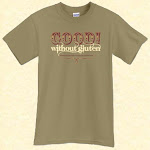
One issues those of us who follow gluten free diets have is what to eat for breakfast. If you think about it almost all traditional breakfasts are based on gluten ingredients. The obvious one that doesn't is eggs. Don't get me wrong, I like (maybe even love) eggs, but I can not eat them every single day, although I did try for a while! And who has time to cook them every morning? I sometimes eat gluten-free frozen waffles, but not every day. I love to cook gluten-free pancakes, but once again it's time consuming. Fruit? Yes, but it doesn't fill me up.
Lets face it, there isn't anything as quick and easy and satisfying for breakfast as cereal. A stroll down a typical cereal isle will reveal about 50 to 100 types of cereals. Until recently 2 or three of those may have been gluten free, depending on the store. Several stores had no gluten-free options. The problem with most gluten free cereals that are out there is that they are very expensive. A 12 ounce box could easily cost $6 or more. This is not to say that these aren't good values. Typically these cereals are made form high quality ingredients in dedicated gluten free facilities. Also they are produced in small runs, so the pricing is appropriate, but in this day and age I just can't afford to pay that much for breakfast.
So finally one of the big manufacturers with wide distribution has payed attention to the emerging gluten free market. General Mills simply changed one of the ingredients (containing barley) in Rice Chex and it became gluten free. Just like that a tasty, widly available and resonably priced (under $3 for 12.8 oz.) gluten free cereal was available!
Evidentially Rice Chex has been received so well that General Mills has announced that is introducing 5 new gluten free cereals. Corn Chex, Corn Chex, Honey Nut Chex, Strawberry Chex, Chocolate Chex, Cinnamon Chex are not currently gluten free but are in production.
According to Cecile M Davidson, General Mills Consumer Services, "All 5 products should be widely available across the U.S. by June 1, 2009." Make sure that the box says "Gluten Free" before you buy it.
Lets hope that other manufacturers will take notice and start producing more gluten free cereals. There are many products out there, Rice Crispys for example, that have barley as a inconsequential ingredient.






